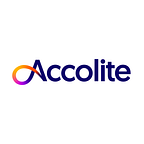By Radhakrishnan Nariangadu, Accolite Digital
This article explores working code demo to showcase the concepts discussed in Part 1.
I had discussed 2 approaches for use cases 2 and 3. The code shared in this article showcases both approaches so that you can understand the pros and cons better.
For Approach 1, I’ve not applied a distributed lock so that I can demonstrate the potential data integrity issues when individual clients attempt to update a shared object.
Please note that the code is a very rudimentary timeline management service, missing many use cases. It’s meant to showcase how a distributed cache enables atomic operations across a cluster in a very efficient manner.
The code example uses java data objects just to keep it simple, but in a system targeting high throughput there’s a very good probability that the data format string, e.g., json string, is passed along the pipeline to eliminate Object SerDe processing.
To read the full article, click here.
About Accolite Digital
We are an innovative, best-in-class digital transformation services provider helping our clients solve complex business problems through a human-centric design and product innovation approach. Our differentiated offerings span digital product engineering, cloud and DevOps, data and AI, customer experience, cybersecurity, and design services. We are specialists in the industries we serve including banking and financial services, insurance, technology, media and telecom, healthcare, and logistics.
With a team of more than 3,000 technical, domain, and business experts, we have a presence across the United States, Canada, and Europe with digital labs in Bangalore, Hyderabad, Gurugram, and Chennai.
